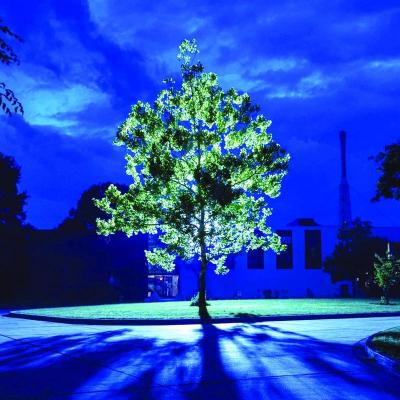One of the most remarkable eras in space exploration occurred decades ago when NASA conducted the Apollo missions that sent humans to the moon for the first time in history. Little known to NASA enthusiasts is that as part of the Apollo 14 mission, astronaut Alan Shepard and Edgar Mitchell sent a third astronaut named Stuart Roosa to remain on the lunar surface in the command module, who carried hundreds of tree seeds with him from Earth.
During the mission, the seeds were categorized and sorted, and NASA left some of those seeds on Earth for comparative purposes. The mission began with about 500 seeds of different tree species, but the container exploded, rendering many of them unviable for planting. The seeds orbited the moon 34 times before returning to Earth and were eventually planted in various locations around the world. Since then, NASA has referred to the plants that sprouted from the planting of those seeds as "moon trees," of which there are a total of 83, most of which were planted in the United States, along with two in South America and one in Europe. Notably, this group of seeds included redwoods, Douglas firs, sycamores, sweet gum trees, and pines. However, about a third of the moon trees have died since being planted in the 1970s. Additionally, many of the seeds were originally planted as part of the United States' Bicentennial celebration in 1976.
The tree depicted in the image below is one of those moon trees, a sycamore planted in 1975 at Mississippi State University in the United States. After the seeds returned from space, they were handed over to the U.S. Forest Service for monitoring until they sprouted, although some were not planted until years after the mission. Over the years since the seeds were planted, many have forgotten about them. In 1996, former astronaut David Williams undertook a personal mission to find and catalog all these moon trees, starting with a list of 22 lunar trees and tracking down 80 more, though 21 of them died during the search. Williams stated that the trees that died likely did so for reasons unrelated to their time spent in space.




